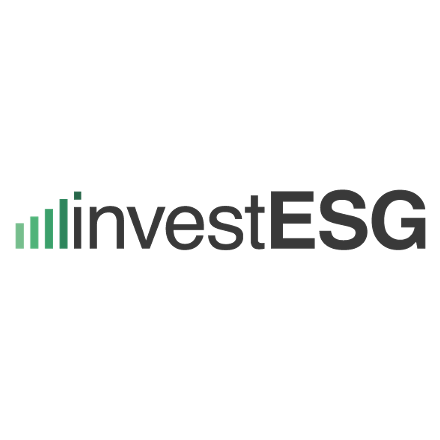Q&A with Snorre Gjerde, Lead Investment Stewardship Manager at Norges Bank Investment Management


NBIM has been an active member of the Taskforce on Nature-related Financial Disclosures (TNFD) since 2021, whereby many asset owners and managers still struggle to understand the relevance of the topic. Why is it a key focus for NBIM?
NBIM manages the Norwegian sovereign wealth fund, which is a large, globally diversified portfolio with a very long-term investment horizon. These characteristics are key to why biodiversity loss and ecosystem degradation have been high on our ownership agenda for a number of years.
The fund is owned by the Norwegian people, and our job is to manage it in a way that benefits both the generations of today, but also future generations. With this timespan, the return of our portfolio is dependent on sustainable development not just in economic, but also environmental and social terms.
Our equity portfolio is spread out across over 8,800 companies and 72 different markets. We often say that we own a small slice of the global economy, and on average we hold roughly 1.5% of all listed companies globally. It follows that if a substantial part of global GDP depends on nature and its services, then the value creation of the companies in our portfolio is also highly dependent on healthy ecosystems and the biodiversity that underpins them.
With natural ecosystems increasingly coming under pressure, it means that the companies we invest in are also facing financial risks associated with their impacts and dependencies on biodiversity. Furthermore, being so broadly diversified means that if one company in our portfolio is involved in unsustainable use of ecosystems, these impacts can have financial consequences for other companies that we are also invested in.
We often say that we own a small slice of the global economy, and on average we hold roughly 1.5% of all listed companies globally. It follows that if a substantial part of global GDP depends on nature and its services, then the value creation of the companies in our portfolio is also highly dependent on healthy ecosystems and the biodiversity that underpins them.
As a result, it is important for us an investor that the companies we own are able to understand their dependency on and impact on nature, and handle both substantial challenges and opportunities through more sustainable use of ecosystems. As an investor across different industries and geographies, we are optimistic about the TNFD as a globally scalable tool to help companies and their investors strengthen their management of nature-related issues.
NBIM has been among the pioneers in committing to TNFD disclosures. Could you share the key findings, challenges, and opportunities related to the framework that NBIM has encountered, and how these insights can benefit other investors?
Our active participation in the design and development phase of the TNFD has not only given us the opportunity to help shape the framework, but has also allowed us to learn from this group of senior experts and leaders, which includes peer financial institutions and leading companies in relevant industries.
We have now moved from creation mode to implementation mode, and have started applying the framework to our own portfolio. We decided to start with our equity investments, which make up the largest portion of our assets under management. Earlier this month, we published our initial set of TNFD-inspired disclosures. We did so in the spirit of transparency and information-sharing: to update our stakeholders on our progress, and to contribute to further discussion on how nature-related risks can best be approached. We will continue to develop our practices and reporting as we gain access to better data across our portfolio and learn more about the interplay between our investments and the natural environment. Embracing new standards is continuous work, and we value thoughts and feedback on this first iteration of the report.
Starting to apply the framework has been a helpful exercise for us in terms of streamlining our thinking around nature risk, and mapping out how our internal structures and processes, and overall responsible investment architecture, are set up for addressing this important topic.
One piece of analysis which I personally found quite powerful, and which we share in our TNFD pilot report, was a visualisation of how different sectors in our equity portfolio directly depend on products and services provided by nature. The analysis confirms that a significant number of business processes across the sectors we invest in rely on access to water resources and healthy, biodiverse ecosystems. This underscores the importance of our ownership efforts on water stewardship and biodiversity protection, and lays the ground for further analysis and engagement work in these key industries.
Starting to apply the framework has also highlighted some areas that are challenging to address from the perspective of a broadly diversified investor. One example is around identifying and assessing where companies interface with locations that are sensitive from an environmental perspective. Biodiversity loss is a global challenge, but the impacts and dependencies tend to be localised and often require site-specific solutions. This is also why the TNFD has developed specific recommendations around priority locations.
A key challenge for us, when we invest in close to 9,000 companies, is that we need to understand how and where their business activities interface with valuable ecosystems, and also how they are connected to significant impacts and dependencies on nature through their value chains. This necessitates information about the companies’ broader geographical footprint beyond their country of listing or incorporation. As part of our investor expectations, we ask companies to disclose information about the location of their concentrated physical assets and encourage them to be transparent about sourcing from environmentally sensitive areas. As our portfolio companies begin to utilise the TNFD toolkit and disclose relevant information on their interface with nature, we hope to gain better insights into their location-specific risks, dependencies, and impacts. Until then we will consider using third-party data sets and company-reported information to identify where our portfolio companies have activities in sensitive locations.
Starting to apply the framework has also highlighted some areas that are challenging to address from the perspective of a broadly diversified investor. One example is around identifying and assessing where companies interface with locations that are sensitive from an environmental perspective. Biodiversity loss is a global challenge, but the impacts and dependencies tend to be localised and often require site-specific solutions. This is also why the TNFD has developed specific recommendations around priority locations.
NBIM has also published a framework aimed at guiding companies and investors in managing nature-related financial risks. Could you please elaborate on how this framework supports companies and investors?
We have published expectations of how companies in our portfolio should address global challenges in their operations since 2008. The nature-related topics covered by our expectation documents include climate change (first issued in 2009), water management (first issued in 2009), ocean sustainability (first issued in 2018) and biodiversity and ecosystems (first issued in 2021).
Our expectation documents set out how we expect companies to manage various environmental and social matters. They are based on internationally recognised principles such as the UN Global Compact, the UN Guiding Principles on Business and Human Rights, the G20/OECD Principles of Corporate Governance, the OECD Guidelines for Multinational Enterprises and other topic-specific standards.
The expectations are primarily directed at company boards. They emphasize that boards should understand the broader environmental and social consequences of company operations, taking into account the interests of relevant stakeholders. The expectations are an important platform for our responsible investment work and our efforts to be a predictable, transparent owner. They codify the fund’s view on key sustainability challenges, clarify how we would like all companies we invest in to approach these issues, and communicate these priorities to our stakeholders. The expectations are intended to be live documents, and we update them regularly to reflect external developments in scientific fields, business practices and industry standards, and seek input from our stakeholders in these review processes.
All opinions expressed are those of the author and/or quoted sources. investESG.eu is an independent and neutral platform dedicated to generating debate around ESG investing topics.
Published by
 investESG
investESG
 investESG
investESG

